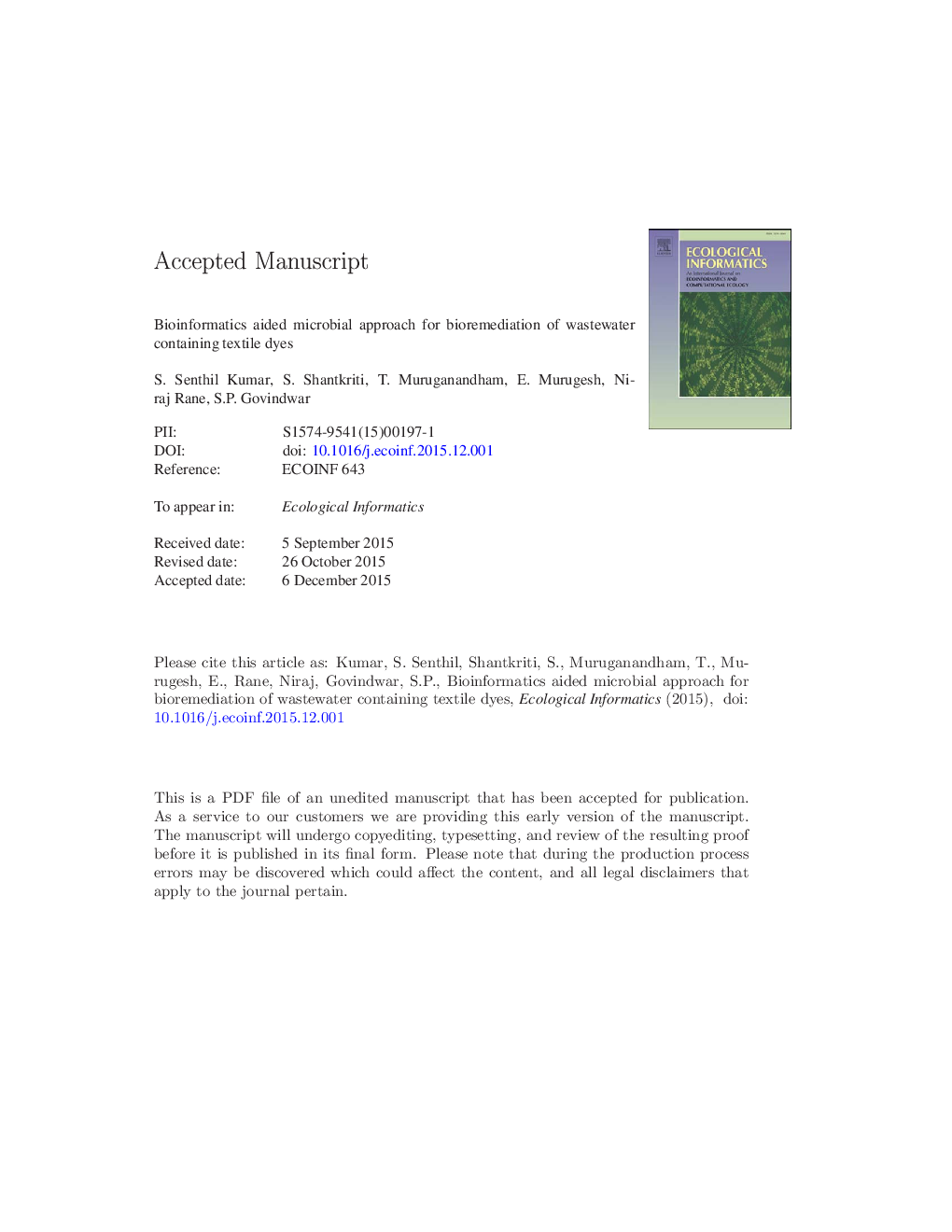| Article ID | Journal | Published Year | Pages | File Type |
|---|---|---|---|---|
| 6295719 | Ecological Informatics | 2016 | 36 Pages |
Abstract
Four textile azo dyes, Joyfix Red, Remazol Red, Reactive Red and Reactive Yellow, were studied for decolorization. Of nineteen soil bacterial isolates, two novel strains were found to highly decolorize Joyfix Red and were identified as Lysinibacillus sphaericus (KF032717) and Aeromonas hydrophila (KF032718) through 16S rDNA analysis. Laccase and Azoreductase enzyme modeling and enzyme-dye interaction performed using Schrödinger Suite imitated decolorization percentage. Results based on cumulative Glide score (Dry laboratory) and decolorization percentage of the other three dyes based on ultraviolet-visible (UV-vis) spectroscopy (Wet laboratory) were reliable. Biodegradation of Joyfix Red was confirmed by high-performance liquid chromatography (HPTLC) elution profile which showed four peaks at 1.522, 1.800, 3.068 and 3.804Â min with that of parent dye which showed single peak at 1.472Â min. Fourier transform infrared spectroscopy (FT-IR) analysis supported the biotransformation of Joyfix Red. Gas chromatography-mass spectroscopy (GC-MS) analysis showed sodium (3E,5Z)-4-amino-6-hydroxyhexa-13,5-triene-2-sulfonate was formed as end product during biodegradation. From these findings, it can be inferred that enzyme and dye interaction studies can assist in examining decolorization efficiency of bacteria and its enzyme, thereby enhancing the bioremediation process by reducing preliminary lengthy wet laboratory screening. This is the first report of a combinatorial in silico cum in vitro approach and its validation for the bioremediation of wastewater containing these textile azo dyes.
Keywords
Related Topics
Life Sciences
Agricultural and Biological Sciences
Ecology, Evolution, Behavior and Systematics
Authors
S. Senthil Kumar, S. Shantkriti, T. Muruganandham, E. Murugesh, Niraj Rane, S.P. Govindwar,
